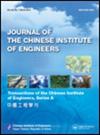Alternative solutions for the physicochemical evaluation and improvement of the caking properties of calcium ammonium nitrate fertilizer as a quality problem under atmospheric conditions
IF 1.2
4区 工程技术
Q3 ENGINEERING, MULTIDISCIPLINARY
Journal of the Chinese Institute of Engineers
Pub Date : 2023-08-04
DOI:10.1080/02533839.2023.2238778
引用次数: 0
Abstract
ABSTRACT Fertilizers are very sensitive to climatic conditions due to their hygroscopic nature. They tend to absorb moisture, weaken and accordingly lose their free-flowing property depending on the ambient conditions. In this study, the influence of storage conditions on a commercial grade calcium ammonium nitrate (CAN/26) fertilizer was investigated using methods that included simulation of storage and handling. The mechanical properties of CAN/26 fertilizer were observed by friability and crushing strength tests. Granule structure begins to weaken especially above a temperature of 40°C and a pressure of 0.33 kg/cm2. Sudden changes in ambient temperature enhance the caking propensity by 4.8%. Fertilizers above 65% relative humidity start to absorb moisture and degrade at very high temperatures. The phase transition of ammonium nitrate between crystalline forms plays an important role in the caking of CAN/26, as its tendency to agglomerate at about 32°C is greatly reduced. The results show that the granule degradation in CAN/26 fertilizer increases almost linearly with increasing temperature, humidity, and pressure but there is a sharp limit for each parameter for degradation to start. With these limits, it may be possible to carry out the protection and control of the good quality of fertilizers in the sector.作为常压条件下质量问题的硝酸铵钙肥结块特性的理化评价和改进的替代解决方案
由于肥料的吸湿性,它们对气候条件非常敏感。它们往往会吸收水分,变弱,并因此失去其自由流动的特性,这取决于环境条件。以一种商品级硝酸铵钙(CAN/26)肥料为研究对象,采用模拟储存和搬运的方法,研究了贮存条件对其性能的影响。通过脆性和破碎强度试验,观察了CAN/26肥料的力学性能。颗粒结构开始减弱,特别是在温度超过40°C和压力为0.33 kg/cm2时。环境温度的突然变化使结块倾向增加4.8%。相对湿度超过65%的肥料在非常高的温度下开始吸收水分并降解。硝酸铵在结晶形态之间的相变对CAN/26的结块起重要作用,在32℃左右的温度下,CAN/26的结块倾向大大降低。结果表明,随着温度、湿度和压力的增加,CAN/26肥料中的颗粒降解几乎呈线性增加,但每个参数的降解开始都有一个明显的极限。有了这些限制,就有可能对该部门的肥料质量进行保护和控制。
本文章由计算机程序翻译,如有差异,请以英文原文为准。
求助全文
约1分钟内获得全文
求助全文
来源期刊
CiteScore
2.30
自引率
9.10%
发文量
57
审稿时长
6.8 months
期刊介绍:
Encompassing a wide range of engineering disciplines and industrial applications, JCIE includes the following topics:
1.Chemical engineering
2.Civil engineering
3.Computer engineering
4.Electrical engineering
5.Electronics
6.Mechanical engineering
and fields related to the above.

 求助内容:
求助内容: 应助结果提醒方式:
应助结果提醒方式:


